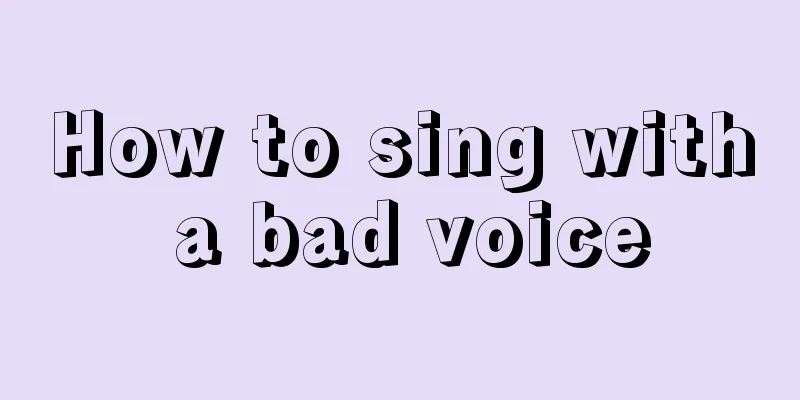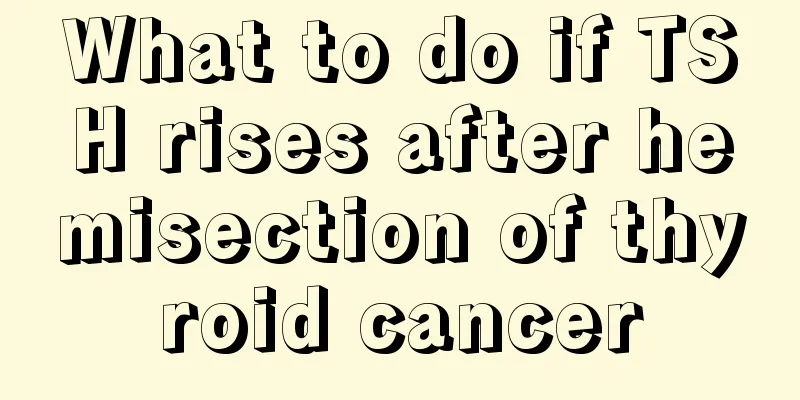The 1st to 7th cervical vertebrae are affected respectively

|
When cervical spine problems occur, many people have different complications. Some people's vision is affected, some people often have headaches, and some people have rhinitis. This is related to which section of the cervical spine the problem occurs. The cervical vertebrae have one to seven segments, and each segment corresponds to a different part of the body. Therefore, the organs affected by the cervical vertebrae 1 to 7 are also different. For this content, you can understand it based on the introduction of segments 1 to 7. The cervical spine refers to the cervical vertebrae, which are located below the head and above the thoracic vertebrae. The cervical spine is composed of seven cervical vertebrae. Except for the first and second cervical vertebrae, there is an intervertebral disc between the other cervical vertebrae. Together with the intervertebral disc between the seventh cervical vertebra and the first thoracic vertebra, there are a total of 6 intervertebral discs in the cervical spine. Except for the special structure of the first and second cervical vertebrae, the other cervical vertebrae are roughly similar to the thoracic and lumbar vertebrae, and are composed of basic structures such as the vertebral body, vertebral arch, and processes (including transverse processes, upper and lower articular processes, and spinous processes). The vertebral body is in front and the vertebral arch is in the back, and the two together form the vertebral foramen. All the vertebral foramina are connected to form the vertebral canal, which contains the spinal cord. The cervical vertebra is the smallest segment in the spine, but it has the greatest flexibility, the highest frequency of activity, and the greatest load-bearing capacity. However, it is very fragile. It is also the central thoroughfare connecting our body and head. The cervical artery and spinal nerve center pass through here. Therefore, any lesions in the cervical spine will affect our entire body. This is also the main factor causing the high incidence of cervical spondylosis and determining the severity of cervical spondylosis. If we want to prevent and treat cervical spondylosis, we must start with understanding. Cervical spondylosis, also known as cervical spondylosis, is a general term for cervical osteoarthritis, hypertrophic cervical spondylitis, cervical radiculitis, and cervical disc herniation. It is a disease based on degenerative pathological changes. It is mainly caused by long-term strain of the cervical spine, bone hyperplasia, or herniated disc, ligament thickening, which leads to compression of the cervical spinal cord, nerve roots or vertebral arteries, resulting in a series of clinical syndromes of functional disorders. It manifests as vertebral instability and loosening; nucleus pulposus protrusion or extrusion; bone spur formation; ligament hypertrophy and secondary spinal canal stenosis, etc., which stimulate or compress adjacent nerve roots, spinal cord, vertebral arteries, cervical sympathetic nerves and other tissues, causing a series of symptoms and signs. If symptoms of cervical spondylosis have appeared, treatment needs to be started immediately. It is recommended to give priority to non-surgical conservative treatments, such as plasters, massage, acupuncture, etc. Plaster therapy is the most widely used method at present, which is easy to use, safe and painless. Plaster therapy is a plaster made of pure Chinese medicine that is applied to the affected area. The medicinal ingredients can directly reach the subcutaneous tissue, enter the soft tissue and bone surface, improve local microcirculation, reduce swelling of the soft tissue, loosen adhesions, replenish nutrients, increase elasticity, and relieve pressure on the nerves. It can also improve immunity, control the development of bone hyperplasia, and relieve stimulation to soft tissue, thereby eliminating symptoms, relieving pain, and ultimately achieving recovery. You can try Lengxiaotai Xiaotong Patch, which is already a provincial intangible cultural heritage and has been passed down for several generations with a history of one or two hundred years. It has always insisted on using pure Chinese medicine to boil and hand-make the paste. It has an effective rate of 90% for cervical spondylosis, lumbar spondylosis, periarthritis of the shoulder and other bone diseases. Generally, one or two courses of treatment can recover, and it is not easy to relapse. It’s also easy to find, you can find it online. There are seven cervical vertebrae in total, and each cervical vertebra is composed of two parts: the vertebral body and the vertebral arch. The vertebral body is an oval column, connected to the vertebral body is the vertebral arch, and the two together form the vertebral foramen. All the vertebral foramina are connected to form the vertebral canal, which contains the spinal cord. The impact of each cervical vertebrae lesion on the human body is different: 1. Atlas The atlas is the first cervical vertebra. It is called the atlas because it looks like a "ring". It is directly connected to the occipital bone, has no vertebral body and spinous process, and is composed of anterior and posterior arches and lateral masses. The anterior arch is relatively short, with an articular surface in the middle of its posterior (inner) surface, which forms the atlantodontic joint with the odontoid process of the second cervical vertebra; there is an anterior tubercle in the middle of the front, which is the attachment site of the longus colli muscles on both sides. The posterior arch is longer, with a tubercle but no spinous process at its back; this tubercle protrudes upward and backward, and is the attachment point of the rectus capitis minor muscles on both sides. First cervical vertebrae: mainly related to the head, ears, nose, throat, face, etc. If dislocation occurs, it is easy to suffer from headaches, insomnia, vision loss, memory loss, dizziness, high blood pressure and facial paralysis. 2. Axis The axis is the second cervical vertebra. It is similar to the general cervical vertebra, but there is a tooth-like protrusion above the vertebral body called the odontoid process, which can be regarded as the vertebral body of the atlas. Behind the root of the odontoid process, there is the transverse atlanto-ligament, but this ligament is relatively thin; in front of the odontoid process, there is an articular surface that forms the atlanto-dental joint with the anterior arch of the atlas. Second cervical vertebrae: mainly related to ears, nose, throat, tongue, vocal cords, mouth, etc. If dislocation occurs, it is easy to suffer from dizziness, migraine, tinnitus, chest tightness, tonsillitis, mumps, sinusitis, allergies, loss of voice and other symptoms. Note: The inferior articular fossa of the atlas and the superior articular process of the axis form the atlantoaxial joint. Dizziness related to the cervical spine - refers to the atlantoaxial joint. 3. Typical cervical vertebrae 3-6 The 3rd to 6th cervical vertebrae are what we call the conventional typical cervical vertebrae. Features: The vertebral body is small, and the left-right diameter is wider than the anterior-posterior diameter. The front and back are flat and of equal depth. The former is slightly lower than the latter, and its lower edge extends downward to overlap with the anterior and superior part of the next vertebral body. The upper side is laterally concave, with an edge protruding to one side. The lower part is concave from front to back, convex from one end to the other, and has a shallow lateral concave to connect with the next vertebra. The pedicles are slanted backwards and attached to the vertebral body midway between the upper and lower edges, so that the notch of the upper vertebra is the same depth as that of the lower vertebra, but narrower. The vertebral lamina becomes narrower and thinner from top to bottom; the vertebral foramen is large and triangular. The spinous processes are short and bifurcated, and the branches are usually of varying lengths. The transverse foramina of these six cervical vertebrae provide passage for the vertebral arteries, vertebral veins, and sympathetic nerves. Each process is divided into front and back parts, and the two parts are connected by a bone block. There is a deep groove on the top of the bone block as a passage for the spinal nerves. The third cervical vertebrae segment: mainly related to the pharynx, cheek, shoulder, diaphragm, etc. If dislocation occurs, it is easy to suffer from pharyngitis, foreign body sensation in the throat, toothache, neck and shoulder pain, difficulty breathing, hyperthyroidism and other symptoms. Fourth cervical segment: mainly related to neck muscles, pharynx, arms, etc. If dislocation occurs, it is easy to suffer from shoulder pain, toothache, trigeminal neuralgia, hyperthyroidism, chest tightness, hiccups, etc. Fifth cervical vertebra segment: mainly related to the elbows, esophagus, trachea, diaphragm, heart, etc. If dislocation occurs, it is easy to suffer from bronchitis, pharyngitis, asthma, arm pain, tachycardia or bradycardia, etc. Sixth cervical vertebra segment: mainly related to the thyroid gland, esophagus, trachea, heart and lungs, upper limbs, etc. If dislocation occurs, it is easy to suffer from upper arm or wrist pain, thyroiditis, hypotension, arrhythmia, frozen shoulder, numbness and pain in the thumb, etc. 4. Vertebral prominence The prominence vertebra is the seventh cervical vertebra. Except for the long spinous process extending backwards, the rest of the structure is the same as that of ordinary cervical vertebrae. Because its spinous process is very long, the end is not forked but nodular, and it protrudes under the skin, it is called a vertebral protuberance. It rotates with the rotation of the neck and is used clinically as a symbol to identify the sequence of vertebrae. When we lower our head, the highest protrusion on the neck that we see and touch is the seventh cervical vertebra. This is the physiological characteristic of the seventh cervical vertebra. The "Dazhui" acupoint for clearing heat that we often talk about is located in the depression below the spinous process of the 7th cervical vertebra. Seventh cervical vertebra segment: mainly related to the thyroid gland, esophagus, trachea, heart and lungs, brachialis muscle, etc. If dislocation occurs, it is easy to suffer from thyroiditis, hypotension, arrhythmia, numbness and pain in the outer side of the arm, middle finger, brachialis, and ring finger. How to protect our fragile cervical spine? In modern society, cities are developing rapidly and the pace of life is getting faster and faster. Office workers have to stay in the office for a long time, sitting for a long time and maintaining the same posture, which can easily cause cervical spondylosis. Here are 5 ways to protect your cervical spine and stay away from cervical spondylosis. 1. Correct bad sitting posture Working at a desk, playing poker, playing mahjong, operating a computer, reading, etc. for a long time will change the normal curvature of the cervical spine and cause chronic strain of the cervical spine. Therefore, keep your spine straight when performing the above activities. When working or studying with your head down for a long time, you should move your neck every 10 minutes and stretch your limbs when appropriate. 2. Choose a pillow scientifically When people sleep, if the sleeping posture is incorrect, the ligaments between the cervical vertebrae will be in a tense state. Be sure to maintain the correct sleeping position, that is, side-lying as the main position and supine as the auxiliary position. In addition, the height and quality of the pillow also have a great impact on the human cervical spine. The height of a standard pillow should be about 10 cm, and the material of the pillow core should be soft and elastic. 3. Strengthen your neck Strengthening neck muscle training is an important measure to prevent cervical spondylosis. However, it should be noted that unscientific neck exercises will aggravate cervical vertebrae strain. The correct way to exercise the cervical spine is to use the movements of the shoulders and upper limbs to drive the neck muscles, such as jogging, hand-shaking exercises, yoga and swimming. 4. Keep warm Clinical studies have found that catching a cold can cause spasms in the neck muscles or tension in the small joints. Therefore, people should try to avoid staying in damp and cold environments, and adjust the thickness of clothes and quilts at any time according to climate changes to prevent their necks from getting cold. 5. Stay optimistic Studies have shown that people who are in a state of emotional depression, boredom, etc. for a long time are prone to neurasthenia. Neurasthenia will affect the rest of bones, joints and muscles. Therefore, in addition to maintaining correct posture and strengthening exercise in daily life, you must also maintain a healthy and happy mood. |
<<: Is cervical vertebrae in young people easy to treat?
>>: What color and shape is the stool?
Recommend
The role of cerebral circulation treatment
Cerebral circulation technology treatment mainly ...
Acclimatization is a disease
When some people go to a foreign country, they wi...
How to effectively prevent gallbladder cancer
The occurrence of each disease generally has some...
How to check for early brain cancer
Brain tumors are also called intracranial tumors,...
Is new furniture toxic?
I believe that for many young friends working har...
Lemon stain removal
Lemon is a common fruit in our lives. It tastes s...
The role of sodium saponin
With the improvement of living standards, more an...
Can uterine cancer be passed on to the next generation?
The emergence of cancer is still a mystery that h...
Can I take cefuroxime for pelvic effusion?
If it is pathological pelvic effusion, it needs t...
What is the reason for yellow soles?
Under normal circumstances, the color of the sole...
How to quickly slim down your thighs in 3 days
Many people look at women's legs first when t...
What will happen if you are severely calcium deficient
Severe calcium deficiency will have a serious imp...
Late-stage treatment of colorectal cancer
Colorectal cancer is a malignant tumor disease of...
Acupuncture at Sanyinjiao
Sanyinjiao acupoint is an acupuncture point on ou...
How to distinguish male and female zebrafish
With the improvement of living standards and the ...









